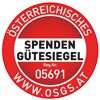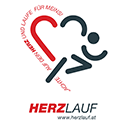SPORT ist gesund - nicht nur für den Körper, sondern auch für die Seele! Es gibt zahlreiche Studien, die zeigen, dass Sport gerade bei Kindern nicht nur für die körperliche Entwicklung, sondern auch für die psychische, soziale und neuromotorische Entwicklung ganz wesentlich ist. Und Bewegungsmangel stellt außerdem neben Bluthochdruck, Blutzucker und Cholesterin ein erhebliches kardiovaskuläres Risiko dar.
Doch wie sieht das genau für Kinder mit einem Schrittmacher aus? Kinder mit Herzerkrankungen werden immer wieder aus den verschiedensten Gründen von körperlichen Belastungen und sportlichen Aktivitäten ganz oder teilweise ausgeschlossen. In einigen Fällen kann es natürlich berechtigte, medizinisch indizierte Beschränkungen geben – aber meistens entsteht das Sportverbot durch die Sorge: „Es könnte etwas passieren...“
Gleich vorweg: Das Risiko für Kindern mit einem Schrittmacher bei Sport ist extrem gering. Es gibt nur sehr wenige Fallbeispiele, bei denen es im Rahmen einer sportlichen Aktivität zu einer Beschädigung eines Schrittmachersystems gekommen ist. Dagegen ist der Schaden, der durch ein Sportverbot entsteht, um ein Wesentliches höher. Dennoch gibt es aber Aspekte, die man bei Kindern mit Schrittmacher beachten sollte.
Schrittmacherpatienten haben zumeist ein Problem mit dem Herzrhythmus. Das Herz schlägt zu langsam und braucht daher Unterstützung. Diese kann durch das Einsetzen eines Schrittmachers, der das Herz stimuliert gegeben werden. Außerdem sind Kabel, sogenannte Sonden, nötig, um den elektrischen Impuls vom Schrittmacher zum Herzen zu leiten. Durch Erschütterungen, starke Änderung des Umgebungsluftdruckes sowie mechanische Krafteinwirkungen kann die Funktionsweise des Schrittmachers bzw. der Sonden beeinflusst oder beeinträchtigt werden.
Starke Kraftmomente, die auf Sonden oder Schrittmachergeräte wirken, könnten diese verletzen. Somit liegt es auf der Hand, dass Sportarten, bei denen es zu einer starken Krafteinwirkung auf das Gerät oder die Sonden kommen könnte, zu vermeiden sind. Dazu zählen natürlich insbesondere Kontaktsportarten wie Karate, Judo, Boxen und Taekwondo-Do. Auch Mannschaftssportarten wie Rugby oder American Football sind aus diesen Gründen bedenklich. Im Allgemeinen sollten somit Sportarten mit hohem Verletzungsrisiko oder möglichem Sturz aus größerer Höhe vermieden werden (z.B. auch Reiten, Turmspringen) - ein Sprung ins Wasser von einem 1-3 m Brett ist natürlich bedenkenlos möglich.
Natürlich kann es auch bei Fußball, Basketball oder Handball zu heftigerem Körperkontakt kommen. Je älter das Kind, desto stärker kann die Krafteinwirkung sein. Werden diese Sportarten aber im Rahmen des üblichen Freizeit- oder Schulsportes ausgeübt, ist das Risiko sehr gering.
Beim Geräteturnen am Stufenbarren oder am Reck ist allerdings Vorsicht geboten. Beide Sportarten sollten vermieden werden.
Da große Änderungen des Umgebungsdruckes sich negativ auf die Schrittmacherfunktion auswirken könnten, sollte außerdem auf Flaschentauchen (vorallem ab einer Tiefe von mehr als 10m) verzichtet werden. Auch Höhenbergsteigen über 5000m wird als risikoreich angesehen. (Flugreisen, auch Überseeflüge sind bedenkenlos durchführbar!)
Bei all den aufgezählten Einschränkungen sollte man natürlich stets die individuelle Situation beurteilen. – Nicht alle Schrittmacherpatienten sind gleich: Bei Patienten die ohne Schrittmacher nicht auskommen, also jenen die „schrittmacherabhängig“ sind, sind die Empfehlungen strenger zu interpretieren, als bei Patienten, die auch ohne Schrittmacher leben können.
Die individuelle Beratung und Besprechung mit dem betreuenden Arzt ist hier unersetzlich. Ziel muss es immer sein, den eigenen individuell besten Weg in Abwägung zwischen Lebensqualität, sportlicher Ambition und Risiko in Rücksprache mit dem Kinderkardiologen zu finden.




















